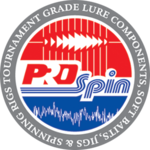Mono vs Braid - Which is best fishing line?
Author: galaszuk Date Posted:22 January 2018
"From monofilaments to fluorocarbons to braids, dozens of choices require savvy anglers to do their homework....."
Deciding when to use braid or monofilament as a main line might seem intuitive in most cases, but while one angler advocates braid for all bottom fishing, another says it deters bites in clear water, even with a fluorocarbon leader. Some say mono offers more abrasion resistance, while others believe braid does.
There have been many angler surveys done these past years, with the aim of deciding the best line type for each of the most common fishing styles. Some may disagree, but the general consensus seems to be:
- Trolling: mono
- Live-bait fishing: mono
- Kite-fishing: mono
- Bottom fishing/jigging: braid
- Fishing structure: braid
- Casting plugs/lures: braid (spinning reels) ; mono (baitcaster reels)
- Fishing in kelp: braid (cuts kelp more easily for less fouling)
Motives For Monofilament & Fluorocarbon Lines
Stretch
From a design standpoint, what mono and fluoro have is stretch and that can be either positive or negative. If you're not prepared on your end — the drag is wrong, you have the wrong rod action — you'll have issues with braid because of zero shock. The braid will break at the knot nine times out of 10, or worse still it could fracture the rod — something's got to give.
Mono's stretch becomes especially critical when anglers go big-game trolling. With braid, if you get a direct hit from a big fish, say 600 to 1,000 pounds, the result would be considerable damage to your rod or rod holders. At the other of the scale, mono works better on smaller bait-casting reels because light braid can dig into itself.
Safety
There are also safety considerations. Take a wrap past the leader with braid, and you could lose a finger if a big fish were to struggle boat-side.
Also, mono holds knots better and costs less than braid. Many offshore anglers choose mono for safety — because braid can cut hands — and because in clear water, mono is less visible.
Transparency
Mono line is commonly employed when jigging for snapper, live-baiting and sight-casting in the shallows when water visibility is crystalline. The major benefit of many clear fluorocarbon lines is underwater invisibility, due to its higher density and different refractive index. Often anglers will tell you “If you're snapper fishing with braid, even though you have a fluorocarbon leader, you won't get a bite. When fishing mono you can often hook up almost immediately; while others fishing braid catch nothing.
In salt water, anglers rarely use fluorocarbon as a main line, but such lines make a good inshore choice. Its primary drawbacks are cost and susceptibility to friction. The friction issue means anglers must take extra care to lube the line (wet) and use a slow and uniform motion when tying knots. Some specific knots don’t do well at all in smaller diameters no matter the tying method – think Polomar.
It offers good abrasion resistance, better than nylon mono, and some even say better than braid. Plus the higher density makes for a faster sinking line, which is a major advantage for some angling techniques.
Motives For Braid Lines
Casting Distance
One primary reason many anglers opt for braid is casting distance. They want to get the bait/lure as far as possible, but with bait that far away it may require the zero stretch of braid to drive home the hook point. Basically, when casting lures and baits, braid enlarges the immediate fishing zone making it especially popular with shore fishermen. Just how much farther braid casts remains debatable, but its smaller diameter compared with mono means it flies through the air and cuts through water more easily.
Stopping Power
The stronger braid allows anglers to pull fish from structure quickly where mono and fluoro may give the fish time and distance to wrap the line and anchor themselves.
Sensitivity
Braid's sensitivity makes it a great line for working plugs and lures and for bottom fishing. It's great for any crank or spinner bait that has movement. If you pick up a piece of grass on the line, you feel it. And it creates more positive contact with the fish.
Reduced Diameter vs Breaking Strain
Braid also offers more strength than mono or fluoro for a relative line diameter, which means anglers have the option of packing more line onto smaller reels, or upping the poundage without any loss of capacity.
But while braid's strength creates confidence, its knot-failure rate means connections must be tried and tested. When you tie mono and braid together, braid will win. With some knots, anglers may only achieve 50 percent breaking strength, so making the best connections between braid and mono becomes ultra-important.
The evolution of braided lines in recent years has all but eliminated early issues with wind knotting and tip wrapping.
Conclusion
Before making your next line purchase, it would be best to consider the style/type of fishing you want to do and choose a line accordingly. By doing so you give yourself a better fishing experience and the best opportunity to net more fish!
If you shy from the costs associated with having multiple spools of line to cover many fishing conditions and are looking for a line that can do most things well, then it may make sense to go with a true hybrid monofilament line – monofilament has come a long way, as the formulas now include multiple ingredients to focus on lowering stretch and memory while improving tensile strength. The current manufacturing trend seems to be combining the best attributes of both mono and braid – think Berkley NanoFil.
